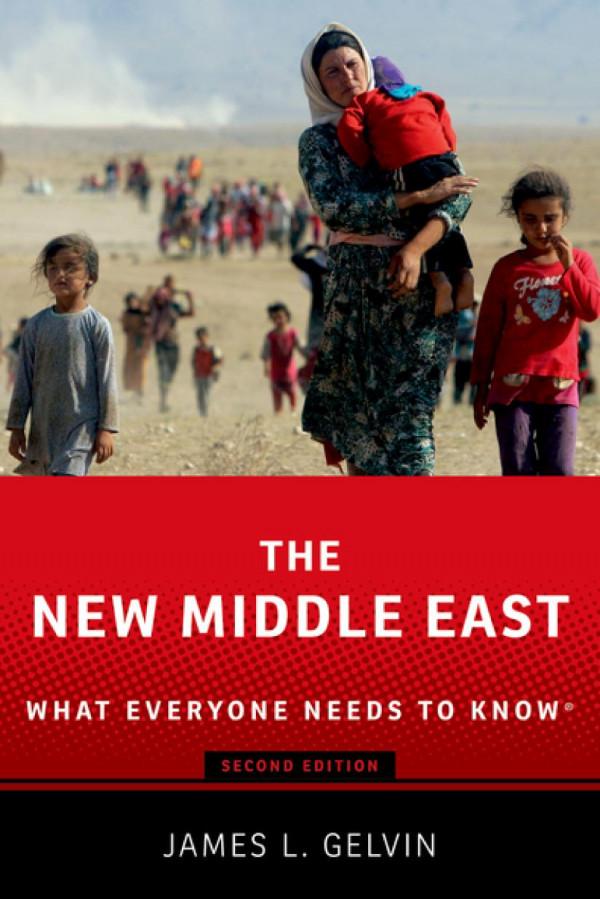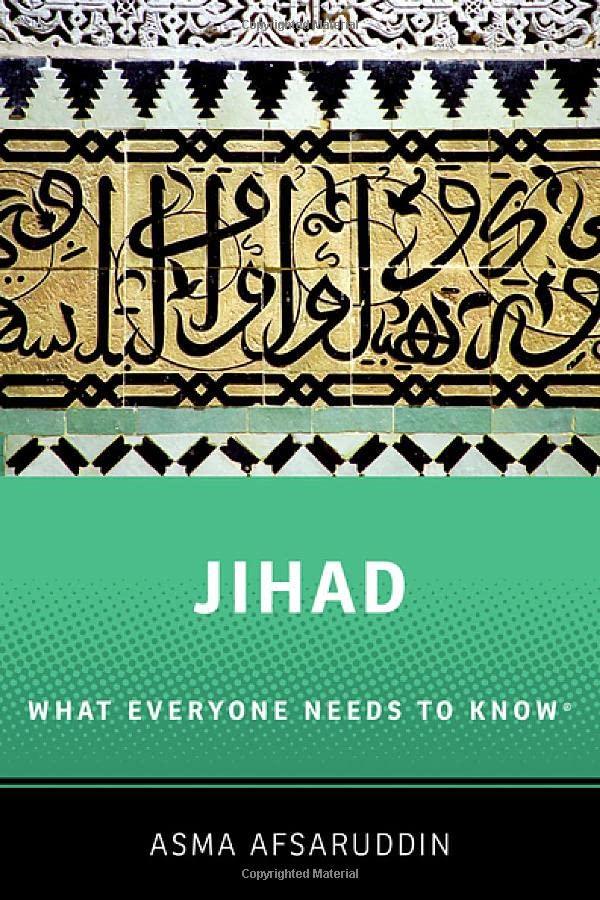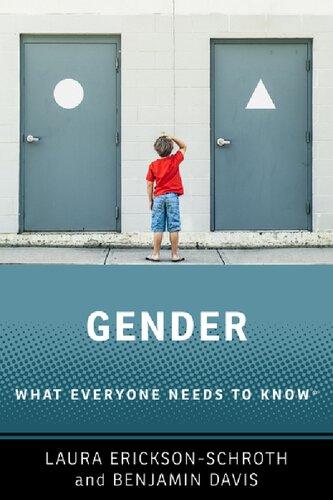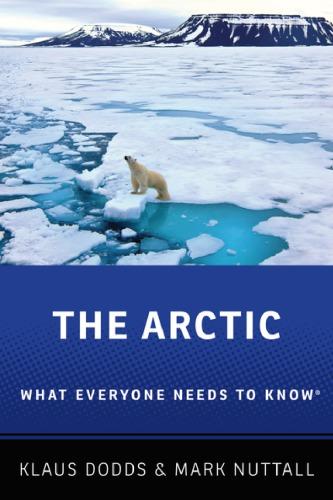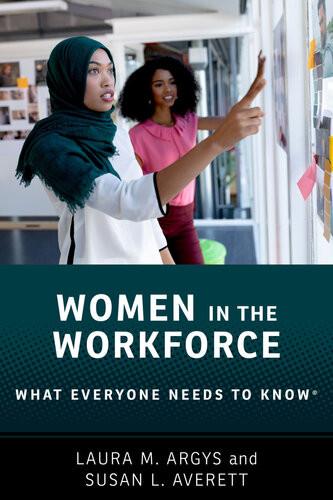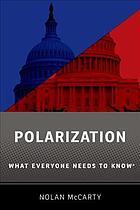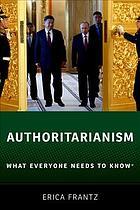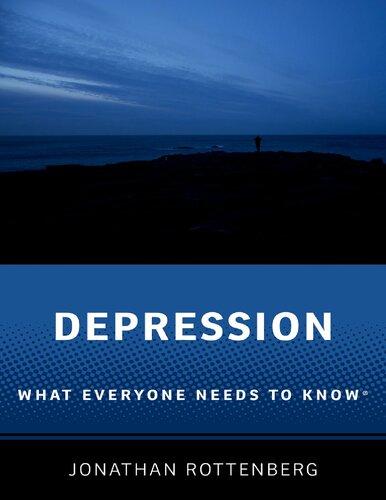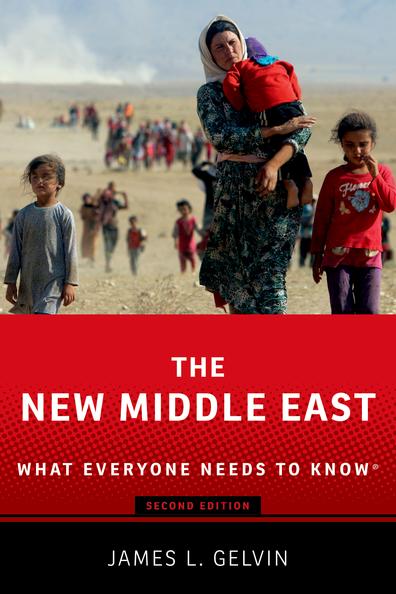1 BEFORE THE DELUGE
THE MIDDLE EAST, 1945– 2011
What is the Middle East?
“Middle East” is one of several terms that refer to the territory of southwest Asia and North Africa. Other terms for the same region include Greater Middle East, Near East, and Middle East and North Africa (MENA).
Although now commonplace, the term “Middle East” is of recent vintage. It was coined in the first years of the twentieth century. At the time, it referred only to the area surrounding the Persian Gulf. In 1920, the British Royal Geographic Society recommended its use to refer to the area stretching from the Turkish Straits in the west to the frontier of India in the east. Nevertheless, it did not displace “Near East” in British and US policy circles until World War II. But even after the term passed into general usage, the boundaries of the region remained imprecise and a bit arbitrary. Is Sudan, an Arab state bordering Egypt in the south, part of the Middle East? What about Armenia?
In this book, “Middle East” refers to the territory that stretches from Morocco in the west to Iran in the east. It includes Morocco, Algeria, Tunisia, Libya, and Egypt (but not Sudan—boundaries have to be drawn somewhere) in North Africa, and Syria, Lebanon, Israel, Palestine, Jordan, Iraq, Iran, Kuwait, Saudi Arabia, Bahrain, Qatar, the United Arab Emirates (UAE), Oman, and Yemen (but not Armenia—again,
for the same reason) in southwest Asia. It also includes Turkey, which straddles Europe and southwest Asia.
Who lives in the Middle East?
According to the World Bank, as of 2020 there were approximately 538 million people living in the Middle East.1 This statistic must, however, be treated with some skepticism. For example, Lebanon has not conducted a census since 1932. Doing so might invalidate the agreed-upon formula for proportional representation among the various religious groups living there. Because of conscription in Egypt, parents do not always register the births of their sons. And although the World Bank puts the population of Qatar at close to 2.9 million, that statistic fails to take into account that more than 88 percent of the people living in Qatar are temporary guest workers. There are about 336,000 Qatari citizens.
Whatever the number of inhabitants of the region, however, those who live there represent a broad array of ethnic, linguistic, and religious groups. The three largest ethnic groups are Arabs, Turks, and Iranians. Arabs make up the overwhelming majority. Estimates of the number of Arabs in the Middle East run between 300 million and 345 million, although these numbers, like most official statistics, must be taken with more than a grain of salt. Most Arabs, Turks, and Iranians live in the Arab world, Turkey, and Iran, respectively. But Arabs, Turks, and Iranians live outside those areas as well. Arab populations live in both Turkey and Iran, ethnically Turkish tribes live in Iran, and Iranian refugees live in both Iraq and Turkey.
Other ethnic groups in the region include Kurds and Berbers. Kurds live mainly in Turkey, Iraq, Syria, and Iran. Clocking in at upward of thirty-five million, they represent the world’s largest stateless nation. Most Berbers live in North Africa. Because the term “Berber” can refer both to those who descend from the inhabitants of the region who lived there before the Arab conquest in the eighth century as well as to those
whose native language is Tamazight (Berber), estimates of the number of Berbers vary widely.
The Middle East is also linguistically diverse. The native language of most Arabs and Turks is, of course, Arabic and Turkish, but Farsi (also known as Persian) is the native language of only about half the population of Iran. Other ethnic groups in the region have their own native languages, such as Kurdish, Tamazight, and Armenian. And in Israel, Hebrew is the official language (as was Arabic until 2018).
A majority of the inhabitants of the Middle East are Muslim. There are two main branches of Islam—Sunni Islam and Shiʿi Islam. The split in the Islamic community took place after the death of Muhammad, when his followers disagreed about who should lead the community. Over time, each branch developed different rituals, traditions, and beliefs. Understanding that there is a divide between Sunnis and Shiʿis is important for understanding some of the political rivalries in the region. It is important to note, however, that the rivalries that pit members of the two communities against each other concern political issues, such as which group should govern. They rarely concern religious issues per se. Where sects contend against each other, religion merely acts as an identifier of the political community to which one belongs. Therefore, understanding how each community’s rituals, traditions, and beliefs differ from the other’s is not at all important for understanding the New Middle East.
Most Arabs and Turks are Sunnis, although Shiʿis make up a significant minority in Lebanon, Yemen, Kuwait, and Saudi Arabia. They make up a majority in two other Arab countries, Bahrain and Iraq. Most Iranians are Shiʿis, and Iran is the world’s largest Shiʿi country.
There are other religious groups in the region as well. Christians of various stripes—Orthodox, Catholics, Maronites (mainly in Lebanon), Copts (mainly in Egypt)—live throughout the Middle East. After the establishment of the State of Israel, most of the members of the Arab world’s once flourishing
Jewish communities quit their homelands voluntarily or because they were coerced to do so by their governments. The largest number decamped to Israel. A similar exodus of Iranian Jews took place after the establishment of the Islamic Republic in 1979. Then there are a myriad of other religious groups as well, including Zaydis in Yemen, Alawites in Syria and Turkey, Alevis in Turkey, Yazidis in Iraq and Syria, Ibadis in Oman and North Africa, and Druze in Israel, Syria, Lebanon, and Jordan. Again, the fact that these groups are present in the region is, at times, an important element in our story.
What is the Middle East state system?
The year 2016 marked the hundredth anniversary of the Sykes-Picot Agreement, and there were countless op-eds and commentaries commemorating (bemoaning?) it. This agreement was a plan hatched during World War I by two officials, Sir Mark Sykes of the British War Office and François GeorgesPicot, the French consul in Beirut, to divide up the Asiatic provinces of the Ottoman Empire in the aftermath of the war. The Ottoman Empire, which ruled much of the Asiatic Arab world as well as Anatolia (the site of present-day Turkey) and Egypt, had entered the war on the side of the Central Powers, which Britain, France, and their allies were fighting. Ever since, Sykes-Picot has come to symbolize the artificial nature of state boundaries in the Middle East. According to most of the op-eds and commentaries written on the occasion of the anniversary, we have instability in the region today because these boundaries were drawn by far-off diplomats who had no regard for the wishes of the populations living there. Or at least that is the story. The reality is quite different. The boundaries Mark Sykes and François Georges-Picot drew up would have been no more or less artificial than any other boundaries that separate states—had they actually gone into effect. They did not. The British, whose military actually occupied the territory covered by the agreement, were dissatisfied
with the boundaries, and the French were powerless to complain. In other words, by the end of World War I the agreement was already a dead letter.
How, then, did states in the territory covered by the agreement (which, by the way, included only a tiny fraction of the territory of the Middle East) get their boundaries? In the Asiatic Arab territories, a number of states had their boundaries set through the mandates system, which the League of Nations, the precursor to the United Nations, instituted there. The system allotted Britain and France temporary control over territory in the region. The two powers took it upon themselves to combine or divide territories into proto-states in accordance with their imperial interests. Thus, Britain created Iraq and Trans-Jordan (later the Hashemite Kingdom of Jordan, or simply Jordan) after the war. Israel and Palestine came even later. France did the same for Lebanon and Syria.
Those states, like most others in the Middle East, gained their independence during two waves. The first wave took place during the period between World War I and World War II. Iraq, Saudi Arabia, and Turkey achieved independence then, and Egypt became somewhat independent (Iran and Oman—the latter known then as Muscat and Oman—were already independent states). The British granted independence to its mandate, Iraq, mainly because remaining there would have been a drain on the imperial treasury. They almost did the same for Egypt, which they had been occupying since 1882. After a widespread rebellion convinced them that Egypt would be ungovernable unless changes were made, they granted Egypt “conditional independence” in 1922. It took Egyptians almost thirty-five years to eliminate the British role there entirely and change conditional independence into full independence.
Saudi Arabia and Turkey achieved independence on the battlefield. In the former case, Abdulaziz ibn Saud, a warlord from north/central Arabia, led an army composed of warriors from a mix of tribes that conquered much of the Arabian Peninsula. When the dust had settled, he established a dynasty that has
ruled Saudi Arabia to this day. In Anatolia, Turkish nationalists fought a grueling four-year war that drove out foreigners who had been occupying the peninsula since the end of World War I. The result was the contemporary Republic of Turkey.
The second wave of state construction took place during the Period of Decolonization, which began after World War II and lasted through the first half of the 1970s. The Period of Decolonization marked the end of formal British, French, and Portuguese colonial empires. During this period, Morocco, Algeria, Tunisia, Lebanon, and Syria gained their independence from France (Spain also abandoned most of the territory it controlled in Morocco). Much of the Gulf (the UAE, Qatar, Bahrain, and Kuwait), along with Israel and Jordan, gained theirs from Britain.
None of these places had been colonies, per se. There had been only one real colony in the Middle East—the British colony of Aden. After independence, Aden became, first, part of South Yemen, then part of Yemen (established in 1990 when North Yemen merged with South Yemen). Instead of colonies, the British and French empires in the Middle East consisted mainly of mandates and protectorates (proto-states in which local rulers set domestic policy and kept order while Britain and France handled their dealings with the rest of the world). There was also the occasional occupation (Egypt) or the wholesale integration of territory into the mother country (as in the case of Algeria, which the French considered as much a part of France as Paris until its independence in 1962). Libya, which the Italians had integrated into Italy in like fashion, also became an independent state during this period. Captured by the Allies from the Italians during World War II, Libya became a ward of the United Nations, which granted it independence three years after the organization’s founding.
Some states in the region—Turkey, Israel, Algeria—won their independence through armed struggle. Others—most of the mandates, for example—won it through negotiation. And some—Saudi Arabia, Yemen—went through painful
periods before the state-building process was over. Then there is the unique case of Palestine. Palestinians engaged in armed struggle with Israel for forty-five years before joining their opponent in direct negotiations. Short bursts of negotiation, separated by periods of breakdown and conflict, continued thereafter. The United Nations voted to recognize Palestine as a nonvoting observer state in 2012.
In spite of its motley origins and the lamentations of those who hold on to the myth of Sykes-Picot, the Middle East state system has been remarkably stable ever since the end of the Period of Decolonization. There have been exceptions, of course, including the shifting borders of Israel and the unification of North and South Yemen in 1990. Nevertheless, the state system in the Middle East has been one of the most stable state systems in the world. It certainly has been more stable than the state system in Europe.
There are two reasons for this stability. First, the passage of time. Although most member states of the state system in the region received their complete independence after World War II, the process of formulating distinct national identities began while those states were under foreign rule. Ever since, states engaged their citizens in common practices and worked to develop their own internal markets and divisions of labor. These are necessary (but obviously not sufficient) preconditions for the formation of distinct national identities. The states in the region also jealously guarded their borders, rewrote their histories, and, indeed, produced enough of their own histories to differentiate their national experience from that of their neighbors. As a result, with the exception of Yemen, no attempt to adjust state borders by negotiation—including the short-lived union between Egypt and Syria (the United Arab Republic, 1958–1961)—bore fruit during the postcolonial era.
The second reason the state system has been relatively stable has been support for that system provided by great powers— first Britain, then the United States—and by regional actors anxious to maintain the status quo. Great power intervention
has occurred whenever some strongman or national liberation movement has risen to the surface and threatened to upset the balance of power or great power interests. Britain twice intervened in Oman (1959, 1975) to crush rebellions that threatened to divide the country. The British again intervened in the Gulf in 1961 to protect newly independent Kuwait from its northern neighbor, which claimed it as Iraq’s nineteenth province. Iraq’s Saddam Hussein reasserted that claim in 1990. Once again, foreign intervention forced an Iraqi retreat.
Do the states in the Middle East have anything in common?
At first glance, the states in the Middle East seem as varied as the people who inhabit the region. The Middle East includes twelve republics and eight monarchies. Egypt has a population of over 100 million (the populations of Turkey and Iran are both a little over eighty million), while the populations of Bahrain and Qatar are 1.7 million and 2.2 million, respectively—if you include guest workers. Algeria, geographically the largest state in the region, spans close to one million square miles. Bahrain, the smallest, includes fewer than three hundred. Then there are the differences in wealth. At its height in 2011, the average annual income of each citizen of Qatar, the richest country in the Middle East, was $148,000. That same year it was $2,600 in Yemen, the poorest. In 2020, after COVID-19 and years of civil strife, that number fell to $2,213.
Nevertheless, beneath the apparent variations among the countries of the region, there are some striking similarities. From the Period of Decolonization through the last decades of the twentieth century, governments throughout the region (Lebanon excepted) played a major role in the economy. They did so to force-march economic development, expand employment opportunities, reward favored groups in the population, and gain control over strategic industries. Governments also provided a wide array of social benefits for their populations,
including employment guarantees, health care, and education. In addition, governments subsidized consumer goods.
There were several reasons why governments in the region—and, indeed, throughout the developing world— adopted these policies. The United States encouraged them to do so, believing that a combination of economic development and welfare would create stable, pro-Western states. So did international financial institutions, such as the World Bank and the International Monetary Fund (IMF), and a legion of development experts who passed on cookie-cutter policies wherever they went. These policies fit the economic paradigm popular at the time. That paradigm gave pride of place to full employment and rising standards of living as the two indicators of economic success. Governments, it was believed, could guide resources to ensure that both goals were reached more effectively in environments in which markets were not well developed.
The third factor leading to the adoption of these economic policies was the logic of decolonization. Before independence, imperial powers set economic policy, mainly for their own benefit. With independence, governments asserted their economic rights to make up for lost time. They also attempted to win domestic support through the redistribution of national wealth.
To pay the cost of development and their welfare policies, almost all states in the region depended on a type of revenue known as “rent.” Rent is revenue that states derive from sources other than taxation. The Middle East as a whole is the most rent-dependent region in the world.
The most obvious source of rent in the region is oil. As of 2018, oil exports accounted for 87 percent of Saudi Arabia’s revenue and 90 percent of Kuwait’s and Iraq’s (other major oil producers, such as Qatar and the UAE, have had more success diversifying their economies). But there have been other sources of rent as well. Egypt derives much of its revenue from foreign aid, Suez Canal tolls, and hydrocarbon (oil and natural
gas) exports. Syria has received foreign aid both from countries that have wanted to keep it out of mischief and from countries that have wanted to encourage that mischief. And over the course of its lifetime, Israel’s rent income has come in the form of American aid (around $3 billion each year in the form of direct military aid since Israel signed a peace treaty with Egypt in 1979), reparations from Germany for the Holocaust, and contributions and loans from Jews living abroad.
In the Arab world, dependence on rent has shaped the relationship between states and their citizens. Access to rent not only means that the state does not have to solicit revenue from its citizens, it also ensures that the state will be the dominant economic actor. This has enabled the state to attach itself to its population through ties of patronage. It also makes it possible for states to temper or buy off dissent—although, as governments throughout the Arab world have increasingly discovered since the 1980s, loyalty has to be earned as well as bought. Overall, states’ access to rent in the Arab world reinforces a relationship between the state and its citizens— what political scientists call the “ruling bargain”—that can be summed up in the phrase “benefits for compliance”: Sit down, shut up, and we’ll take care of you.
Just as the norms of the global economic and political systems shaped states in the Middle East from the Period of Decolonization through the late 1970s, so, too, did a different set of norms that spread worldwide thereafter. If the first period was one in which the state was to play an active role in guiding development and providing welfare, the second was one in which the state was to back off and play a minimal role. As the theory went, free trade and a market-driven approach to economics would enable the sorts of economic gains that had proved so elusive under the old system. This doctrine came to be known as neo-liberalism.
Neo-liberalism began as a response to the international economic crisis of the 1970s. American policy makers saw it as a panacea for a host of ills, including the threat to America’s
dominant position in the world economy and the inability of the overextended governments in the developing world to meet their international economic obligations. The American government therefore pushed rigorously for neo-liberalism wherever diplomats gathered to decide global economic policy. They were assisted in their efforts by the IMF, an organization which the United States dominated and whose job it was to assist countries whose economies had tanked. If those countries needed loans, or if they merely wanted to be deemed creditworthy, the IMF insisted they undertake structural “reforms” to set them on the right path. Only then did the IMF render the necessary assistance.
Neo-liberalism reshaped states, their institutions, and their relationship to their populations. With governments no longer responsible for guaranteeing full employment and social welfare, neo-liberal experts from the IMF and their partners inside governments advised those governments to sell off stateowned enterprises to private investors, reduce tariff barriers and currency controls to promote trade, balance their budgets, deregulate business, and the like. The result was rarely pretty. Popular resistance, corruption, and entrenched interests prevented the realization of the neo-liberal dream in most of the region (if, indeed, it is realizable). Thus, the overall effect of neo-liberal policies in most states was to overlay a jury-rigged market economy on top of an inefficient command economy. At the same time, neo-liberalism shredded the “benefits for compliance” ruling bargain that connected populations with their governments.
What was political life like in the Middle East up through 2010?
Every year, the Economist Intelligence Unit publishes a “Democracy Index.”2 The index ranks countries of the world according to such criteria as electoral process and pluralism, civil liberties, the functioning of government, political participation, and political culture. It then places each country in one
of five categories that range from “full democracies” to “authoritarian regimes.” How did the Middle East fare in 2010, the year in which the first of the Arab uprisings broke out?
Not well. In 2010 not one state in the Middle East made it into the category of “full democracy.” Only one state—Israel— made it into the category of “flawed democracy,” coming in at a ranking of #37 among all the countries of the world. In flawed democracies there are free and fair elections and respect for basic civil liberties. However, there are significant weaknesses in other democratic practices, including problems in governance. The next-highest-ranked state in the region was Lebanon (#86), followed by Turkey (#89), Palestine (#93), and Iraq (#111). The Economist called these states “hybrid democracies.” Elections in all four had substantial irregularities, corruption was widespread, and nongovernmental institutions were weak. (A decade later, Lebanon’s ranking had dropped to #108, Turkey’s to #104, Palestine’s to #113, and Iraq’s to #118.)
All fifteen of the remaining countries in the Middle East fit into the category “authoritarian regimes.” The lowest-ranked state was Saudi Arabia, which came in at #160 on a scale in which the lowest ranking overall was #167. On the whole, the Middle East had the lowest composite score of any region in the world, with the exception of sub-Saharan Africa.
From the different rankings on The Economist list, it is evident that the level of autocracy was not uniform across the region. Autocratic regimes came in various shapes and sizes. Although Kuwait (#114) and Jordan (#117), for example, are monarchies like Saudi Arabia, both have parliaments which can, at times, be defiant. Saudi Arabia does not. Nevertheless, in all three, kings maintain ultimate control: kings can dismiss prime ministers and appoint cabinets. Furthermore, in Kuwait and Jordan electoral districts are heavily gerrymandered.
Before its uprising, Egypt had a form of government that one political scientist called “semi-authoritarian.”3 In other words, the government allowed the opposition (the main component of which during the pre-uprising period was the Egyptian
Muslim Brotherhood) some ability to organize and compete in elections, but no opportunity to win them. A United Nations report called Egypt, like most other Arab states, a “black hole state,” meaning that the executive branch—that is, the office of president or king—was so powerful that it “converts the surrounding environment into a setting in which nothing moves and from which nothing escapes.”4
Libya under its “brotherly leader” Muammar Qaddafi (who ruled from 1969 to 2011), on the other hand, claimed to have no government at all. Instead, it was a jamahirriya, a word made up by Qaddafi to mean “rule by the masses.” Qaddafi maintained that Libya was a direct democracy in which everyone participated in governance without the mediation of representatives. Since such a system could not possibly work, Libya had, in fact, two governments: a “people’s government” on paper and a real government, made up of Qaddafi, his kin, and those he favored, which actually ran the country. Libya narrowly beat out Saudi Arabia on The Economist index, tying Iran—an Islamic republic in which clerics, in alliance with the military, hold ultimate power—at #158.
Hybrid democracies differ in form as well as in ranking. For example, the Lebanese system might be termed a “sectarian oligarchy.” Voters can choose their leaders from a list of the same old political bosses whose posts are determined by the religious sect to which they belong. In Turkey, hybrid democracy works until it doesn’t. The culprit there has usually been the army, which assumed power in 1960, 1971, and 1980; forced the resignation of a prime minister in 1997; and tried (and failed) to take power again in 2016. Each time it assumed power, the army relinquished it only after “cleansing” the political system. It did this by disbanding parties and jailing (and frequently torturing) those it deemed enemies of the state. (Turkey is once again on an authoritarian path, but this time the guilty party—the president—dresses in civilian clothes.) On the other hand, weak institutions and corrupt and incompetent governance threaten the very integrity of both Iraq
and Palestine (which has had two competing governments since 2007).
How did state formation in the region breed autocracies in the Middle East?
Autocratic structures were inscribed into the DNA of most states in the Middle East early on. The independent states that emerged in the region might be divided into three categories. First, there are those that emerged in the interwar period— Turkey, Iran, and Saudi Arabia. In all three, militaries played a key role in establishing the states, and military leaders became their initial rulers. Autocrats in Iran and Saudi Arabia both benefited from foreign (British) support and, in the case of the latter, the British offered protection to the future ruler before the state was founded. And it didn’t hurt that autocratic models of state building and governance were readily available in a period during which Lenin, Hitler, and Mussolini took and held power.
The second category of state includes those that retained the structures the colonial powers had put in place or had sheltered after independence. Those powers had been interested in stability, not democracy. The states in this category include not only most of the remaining monarchies (Morocco, Jordan, Bahrain, Qatar, Kuwait, and the UAE), but Lebanon as well (Oman’s relationship with Britain was more informal but significant nonetheless). The British and French viewed monarchs as reliable collaborators so long as they governed with a firm hand. As in Lebanon, the path to independence taken by monarchies was mainly peaceful (in the Gulf it was the British, not the various monarchs, who insisted that the statelets cut the cord). As a result, their transition from the colonial to the postcolonial era was marked more by continuity than rupture.
The final category of state consists of the postcolonial republics that took shape with the overthrow of the colonial order after independence: Tunisia (where a civilian wrested
control of the government, abolishing the monarchy), Algeria, Libya, Egypt, Syria, Iraq, and Yemen. Again, timing was everything: With the exception of Yemen—created through a shotgun wedding between two formerly independent Yemens in 1990—all emerged at the height of decolonization, when anti-imperialist revolutions and coups d’état undertaken by colonels hell-bent on destroying the remnants of the old order were the tactic du jour. Revolutionaries and coup plotters had little patience with democratic niceties. Their stated goals were typically to end the imperialist presence in their countries, to end feudalism (meaning, economic backwardness), and to end “corruption” (their term for the old boys’ club of the former regime, which they sought to break up).
The Islamic Republic of Iran might also be placed in this category. Like Algeria, the Islamic republic was born of a mass uprising. And like all the others in this category, its leaders sought to root out most vestiges of the old regime.
How did great power meddling in the region foster autocracies in the Middle East?
In November 2003, President George W. Bush spoke before the National Endowment for Democracy and announced his “Freedom Agenda.” “Sixty years of Western nations excusing and accommodating the lack of freedom in the Middle East did nothing to make us safe—because in the long run, stability cannot be purchased at the expense of liberty,” he declared. “As long as the Middle East remains a place where freedom does not flourish, it will remain a place of stagnation, resentment, and violence ready for export.”5 He then announced what he called a “forward” strategy to advance freedom in the region.
Two years after he gave that speech, his secretary of state, Condoleezza Rice, paid a visit to Egypt to meet with Egyptian president Hosni Mubarak. She took the occasion to address students at the American University in Cairo. In her speech
she reiterated Bush’s remarks. “For sixty years, my country, the United States, pursued stability at the expense of democracy in this region here in the Middle East—and we achieved neither. Now, we are taking a different course. We are supporting the democratic aspirations of all people.”6
A year and a half later, however, Rice changed her tune. Instead of pressuring Mubarak about human rights and democracy during a return visit to Cairo, she instead appealed for his help in restarting stalled negotiations between Israelis and Palestinians. The Bush administration’s much vaunted, but fleeting, concern for spreading American values had gone the way of other initiatives to put values ahead of immediate strategic need. American policy reverted to its default position, which one political scientist has termed “democracy prevention.”7 Why haven’t American actions matched American rhetoric?
Over the course of the twentieth century, great powers— meaning first Great Britain, then the United States—established states, intervened directly into their internal affairs, or both. They also protected those states from internal and external threats. Great powers have used their leverage in both the political and economic spheres to dictate policy to governments and have granted them financial assistance. Underwriting democracy was not a high priority for those powers.
Great Britain was the predominant power in the region past the end of World War II. That status was not to last. In the aftermath of the war, the United States, which had never before had an equivalent stake in the region, took Britain’s place as the predominant power. In part this had to do with British economic weakness and American economic strength. The United States, fearing the spread of communism in the Gulf, even offered to pay the insolvent British to remain there. In part this had to do with the ability of the United States to insinuate itself into the conflict between Israel and the states that surrounded it as an indispensable broker during the 1970s. And in part this
had to do with the role the United States played as leader of the “free world” during the Cold War.
American engagement with the region coincided with the onset of the Cold War, which defined US goals there. Paramount among those goals was to contain the Soviet Union and prevent the spread of its influence to the strategically located, oil-rich region. To this end, autocratic regimes proved useful to the United States. For example, American policy makers believed that only strong, autocratic regimes could bring about the rapid economic development necessary to prevent their populations from “going communist.” Only strong, autocratic regimes such as that in Egypt, they believed, could sign peace treaties with Israel in the face of popular opposition to those treaties. And, they believed, only strong, autocratic regimes that maintained a regional balance of power could ensure the uninterrupted supply of oil to the United States and its allies.
The United States directly and indirectly supported military officers who seized power in states throughout the region from the late 1940s through the 1960s. For example, the United States backed (some say sponsored) the first post-independence coup d’état in Syria—the first coup in the Arab world following World War II. The coup overthrew a democratically elected government. And, of course, the United States directly and indirectly supported a host of autocratic kings and emirs. This began even before the end of World War II, when Saudi Arabia became the only neutral state to receive American Lend-Lease assistance.
When the Cold War ended, the United States maintained its support for autocratic regimes, in part out of a sense of obligation and repayment for loyalty, in part because policymakers preferred stability in international relations to anything that might disrupt that stability, in part out of habit. Thus, for example, the United States headed the coalition that threw Iraq out of Kuwait in 1991. By doing so, it maintained the Middle East state system and balance of power as it had been before
